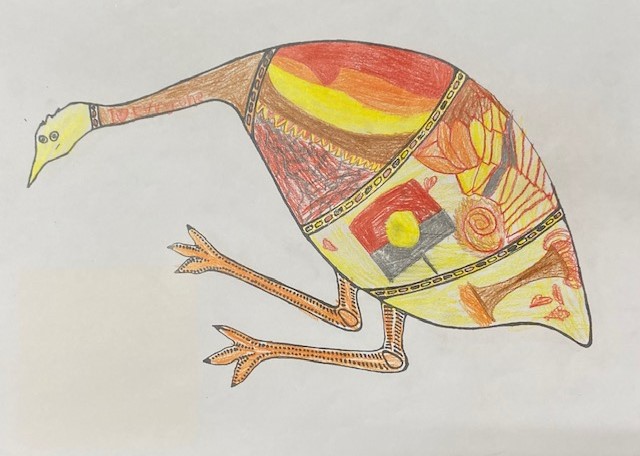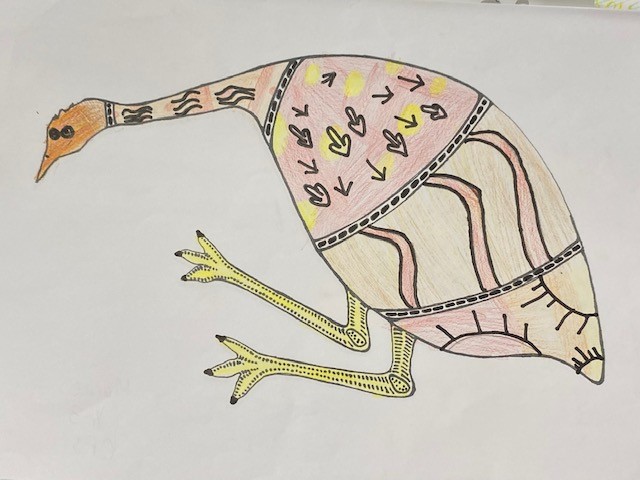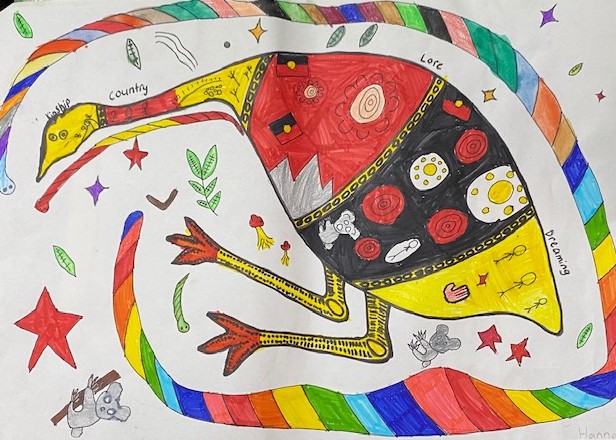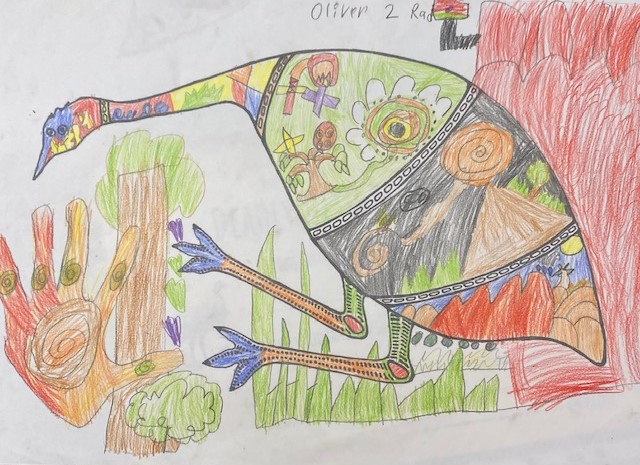2021 Naidoc colouring in competition – Tyalla Public School and Corindi Public School. Students from each year had the opportunity to interpret teachings into art – something First Nation people have been doing for thousands of years.
Raising awareness to the dropping numbers of the coastal emu and over urbanization to the emu’s habitat have been the inspiration behind spreading this knowledge with the colouring in competition to encourage youth to think of their importance in a First Nations perspective. (not inclusive of all perspectives)
Yarrawarra Aboriginal Cultural Centre in partnership with NSW Government: Planning, Industries & Environment, Coffs Harbour Regional Landcare, Woolgoolga Regional Community Gardens and NSW Government: Create NSW Arts, Screen & Culture have created an on site garden containing the diet of the extremely endangered Coastal Emu.
The four sections of Gugaamgan relate to the continuous life cycle of all living things.
The design has 4 segments, head ; neck; heart/ gut and tail, which all together make a Gugaamgan.
The 4 sections represent Kinship/ Country/ Lore/Dreaming.
Kinship in Aboriginal culture – kinship is how all things are related.
This extends beyond family as nothing can exist on our planet without being connected with other things on the planet.
Kinship exists for everything. Plants have Kinship (as they connect with each other through their roots); animals have Kinship (through the things they eat); and even the rocks have Kinship (by the home they provide to small creatures). There is no escaping how everything in our world is connected.
Section 1: Head/Kinship
Represents all the things we learn and do inside our heads.
i.e. being born and becoming familiar with our surroundings; learning about who we are, our strengths & weaknesses. Our identity.
Safety for new emu chicks
Section 2: The neck/Country
Represents country and our responsibility to look after it. When we live on or manage the land, we become part of that Country, and it becomes part of us.
Emu role: seed spreading
Section 3: the heart/body/ Lore
Represents our role within community and relates to the Aboriginal concept of Lore. As we exist and live in a web of Kinship within Country; everything we do affects other things around us. Lore, in this context, means how we learn that, how we live it, and how we take responsibility for it.
The male emu role:
Section 4: The tail/The Dreaming.
The last feature of the Gugaamgan concerns how the head, heart, gut and tail form a living sequence. Food enters the mouth, it is processed inside the body, which creates new life inside it and emerges from the rear of the bird. This lifecycle relates to the Aboriginal concept of The Dreaming. It helps us reflect on how we are the product of everything that has come before us, and how our actions during our lifetime will have impact on all those that come after us. It therefore binds together Kinship, Country and Lore into a single whole life force.




